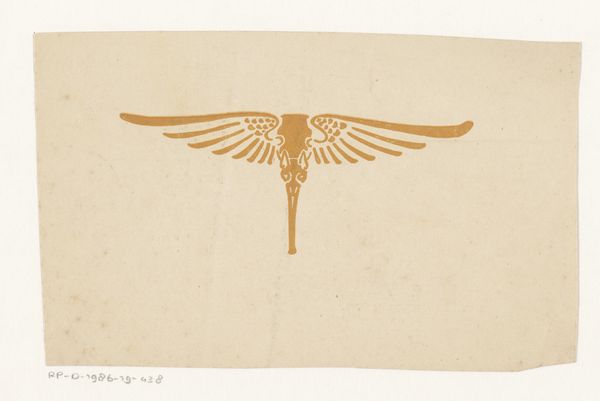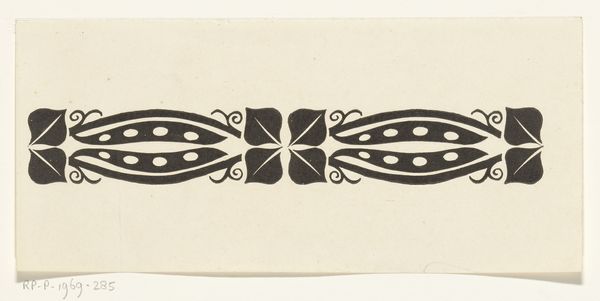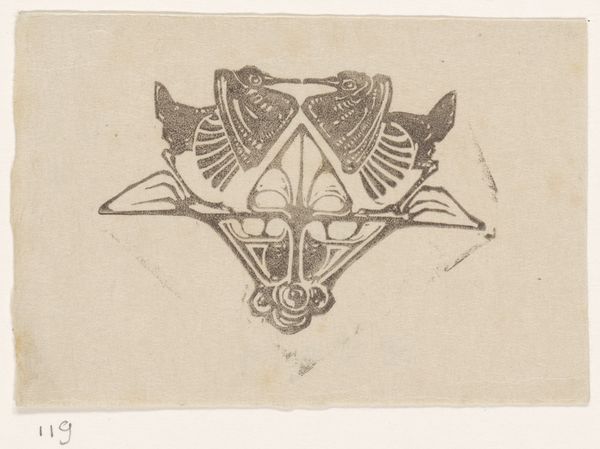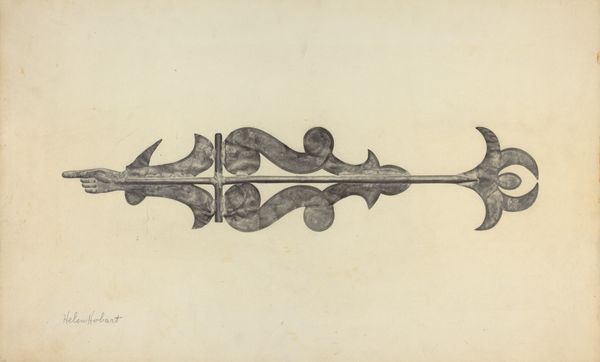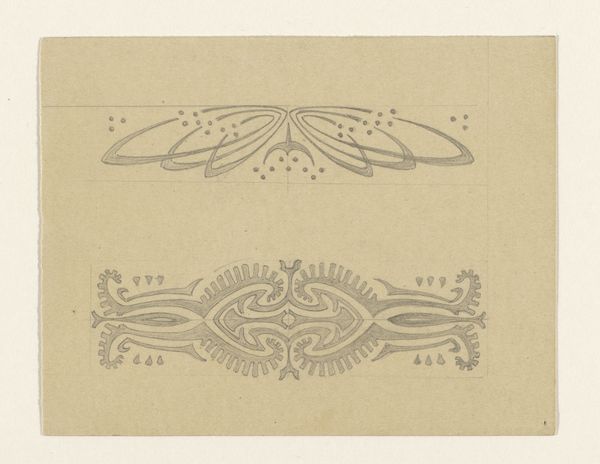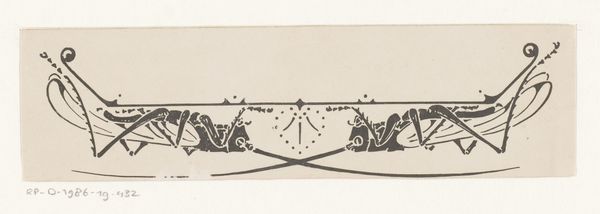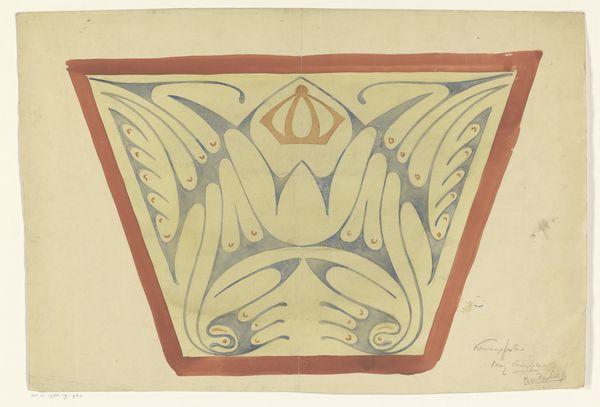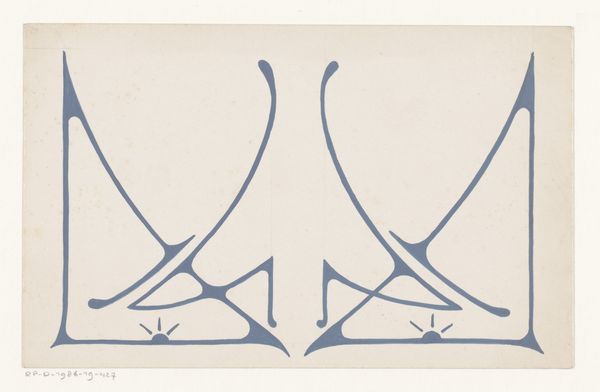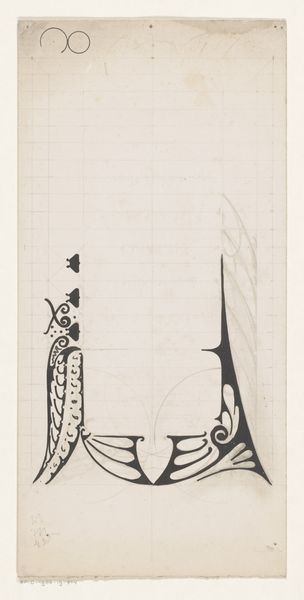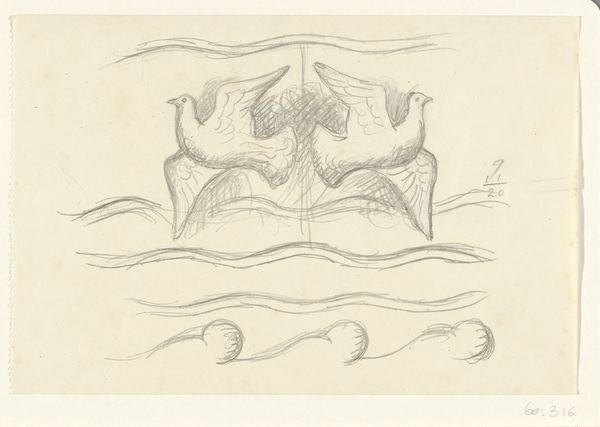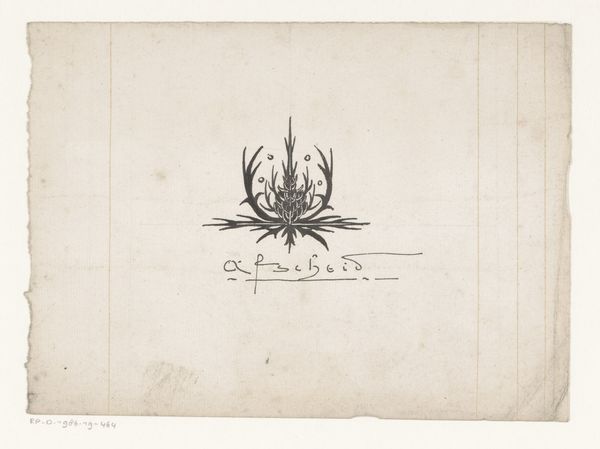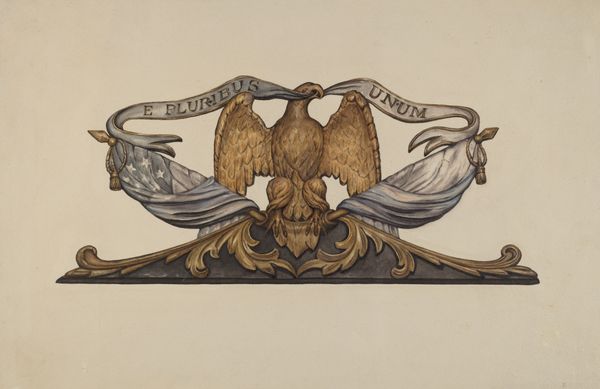
#
quirky illustration
#
blue ink drawing
#
childish illustration
#
cartoon like
#
personal sketchbook
#
ink colored
#
sketchbook drawing
#
watercolour illustration
#
cartoon style
#
cartoon carciture
Dimensions: height 119 mm, width 168 mm
Copyright: Rijks Museum: Open Domain
Curator: Well, hello there. We're looking at "Sluitvignet" by Reinier Willem Petrus de Vries. The dates are a bit broad, 1884 to 1952, giving us quite a range for its creation. It's ink and watercolor on paper. Editor: It reminds me of something I’d absentmindedly doodle in a notebook. A playful, symmetrical bug perhaps. Is “sluitvignet” a… a beetle of some kind? Curator: It actually translates to something closer to "closing vignette." I believe this image likely served as a tailpiece in a publication, a decorative element to mark the end of a section or chapter. Editor: Closing, huh? All that decorative labor at the service of simply...ending. I wonder about the social context in which Vries made this—what type of printing would it have been used for? Was it a luxury item or mass produced? And what were the labor practices surrounding this type of print production? Curator: Good questions, and ones which are not so easy to answer definitively. While we don't know the specifics of its intended use, its cartoonish caricature style and almost childish approach gives me the impression that the image was meant to imbue a publication with light whimsy. Editor: I suppose there’s something poignant about using such a formally elegant material, black ink and water color, to craft something deliberately informal and loose. It plays with expectation, doesn’t it? Curator: Absolutely, and that playfulness makes it deeply engaging. It has a casual spontaneity, yet its underlying symmetry hints at a considered artistic intent, almost as though de Vries was simultaneously being creative and yet bound by design considerations. I am curious about the effect of repeating similar patterns like this across multiple pages within a publication. Editor: Repetition does tend to normalize things, or wear them down—depending on how you view it. What would that do, I wonder, to its aura, once multiplied and reproduced by some kind of press? Curator: A very good point. And it leaves me with one final thought. Perhaps the very best creations are things that manage to make you think, ponder and pose fundamental questions about a piece and about life, questions that have no easy resolution. Editor: Absolutely. The most intriguing artworks always hold mysteries and ambiguities, leaving space for continuous dialogue and discovery, even long after their creation.
Comments
No comments
Be the first to comment and join the conversation on the ultimate creative platform.
